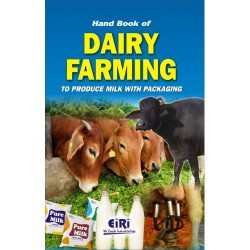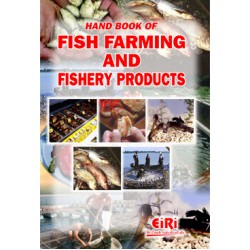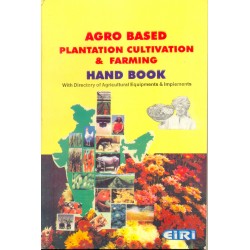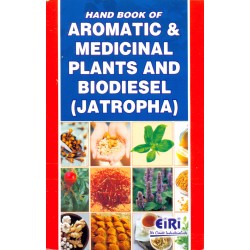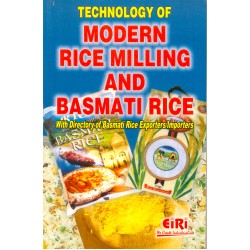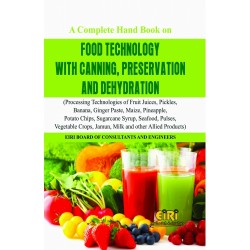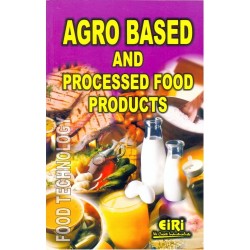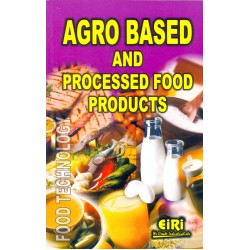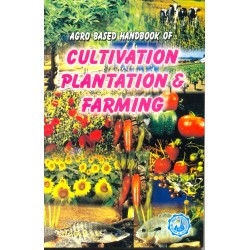hand book of organic farming and organic foods with vermi composting & neem products
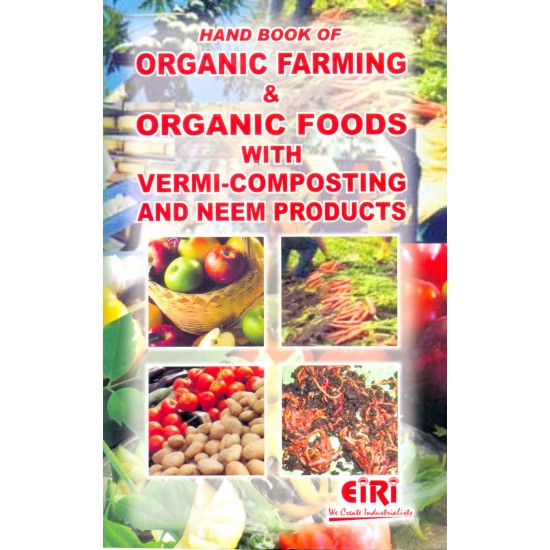
- More than 45 years of experience
- Managed by expert industrial consultants
- ISO 9001-2015 Certified
- Registered under MSME, UAM No: DL01E0012000
- 24/5 Research Support
Get your quesries resolved from an industry expert. Ask your queries before report or book purchase. - Custom Research Service
Speak to the our consultant to design an exclusive study to serve your research needs. - Quality Assurance
All reports are prepared by highly qualified consultants & verified by a panel of experts. - Information Security
Your personal & confidential information is safe & secure.
HAND BOOK OF ORGANIC FARMING & ORGANIC FOODS WITH VERMI COMPOSTING AND NEEM PRODUCTS
Introduction
Organic Farming Principles and Concepts
• Background
• Nomenclature and Meaning
• Natural Farming
• Zero chemical farming
• Bio dynamic farming
• Humus farming
• Compost farming
• Sewage farming
• Integrated farming
• Mixed farming
• Concepts and Principles
• Principles of organic farming
• Scope of Organic Farming
• Advantages and Limitations of Organic Farming
• Impact of Organic Farming on Production and Productivity
• Availability of Organic sources of nutrients
• Reduced yields
Cycle for Survival
• Impact of Advanced Agricultural Technology Hazards
• Adverse Effects of Agricultural Practices on the Farm
• Soil Erosion
• Water Availability
• Salinization
• Fertilizer and Pesticide Contamination
• Genetic Erosion
• Adverse Effects of Agricultural Practices
• Away from the Farm
• Soil Erosion
• Fertilizer and Pesticide Contamination
• Socio Economic Values
• Economic and Political Issues
• Environmental Accounting
• Food Security
• Sustainable Agriculture
• Need of the Hour
• Evolution of Sustanable Agriculture
• Sustainable Livelihood
• Other Eco-Friendly Farming Systems
• Organic Farming
• Biological Farming Nature Farming
• Regenerative Agriculture
• Permaculture
• Alternate Agriculture
• Ecological Agriculture
• Ecological Farming Systems
• Objectives of Ecological Farming
• Prospects
• Integrated Intensive Farming System (IIFS)
• Low External Input Supply Agriculture (LEISA)
• Low Input Agriculture
• Criteria of LEISA
• Ecological criteria
• Economic criteria
• Social criteria
• Biodynamic Agriculture
• Organic Farming vs.Biodynamic Farming
• Principles of Biodynamic farming
• Ruyles for using Biodynamic Agriculture
• Few Biodynamic Preparations
• Research Achievements in Biodynamic Farming
• Permaculture Farming
• Meaning and Objectives of Permaculture Farming
• The Elements of the Permaculture farming system
• Organic Agriculture System
• The Major Aims of Organic Farming
• Goncepts of Organic Farming
• Difference Between Organic and Conventional Farming
• History of Organic Farming
• Needs of Organic Farming
• Needs for Organic Inputs
• Increasing Demand of Organic Foods
Organic Farming
• Management of Autonomous Ecosystem
• Mixed Farming
• Plants
• Animals
• Soils
• Biosphere
• Crop Rotation
• Benefits of crop diversification
• Organic Cycle Optimization
• In partnership with Nature
• Basic Standards and General Principles for Organic Agriculture
• Crop and Soil Management
• Choice of Crops and Varieties
• Crop Rotation
• Fertilization Policy
• Management of Pests, Diseases and Weeds
• Wild Products
• Pollution Control
• Soil and Water Conservation
• Landscape
• Principle Requirements and Pre Conditions
• Conversion from Conventional To Organic Farming
• Farms with Plant Production and Livestock
• Limitations
• Initiating Organic Farming
• Medicinal Plants -the First Crops for Organic Farming
• Management to Premaculture Farm
• Permaculture Farm
• Use of Draft Animal
• Making Permanent Farm
• Conservation of Soil
• Protection of the Soil against Fires
• Protection farm Water Erosion
• Protection from Wind Erosion
• Protection from Wind Erosion
• Improvement of the Soil
• How to bury Organic Matter
• Mixed Cropping
• Permaculture for Wastelands
• Soil and water conservation
• Pioneers
• Pioneer trees and plants
• Secondary species
Soil Environment And Plant Growth
• Mineral Vs Organic Soils
• Soil Factors for Plant Growth
• Soil Fertility
• Soil Productivity
• Essential Plant Nutrients
• Soil and Root Environment
• Soil Texture
• Soil Separate Sizes
• Soil Textural Classes
• Soil structure Classes
• Structureless
• Soil Porosity and Permeability
• Soil Air
• Composition of Soil Air
• Soil Strength
• Soil Color
• Soil Temperature
• Soil Water
• Other Soil Physical Properties
• Tilth
• Soil Colloids and Chemical Properties
• Organic colloids (Humus)
• Cation Exchange
• The Soil Reaction (pH)
• Origin of Organic Soils
• Soil Biology and Ecology
• Soil Formation
• Changes During Soil Formation
• Physical Weathering
• Climate and Soil Formation
• Biota and Soil Formation
• Topography and soil Formation
• Time and Soil Formation
• Interactions of Soil Foming Factors
• Soil Taxonomy
Soil Organic Matter and Humus
• Interaction Between Soil Biota, Soil Organic Matter and soil Structure
• Fungal and Bacterial Pathways of Organic Matter Decomposition and Nitrogen Mineralization in Arable Soils
• Soil structure and Soil Organic Matter Storage
• Microbial Influence
• Food Web in Soil
• Formation Mechanisms of Complex Organic Sructures in Soil Habitates
• Organisms Involved in Organic Matter Formation
• Chemohetertrophic animals
• Saprophytic Bacteria fungi and protozoa
• Oxidoreductive enzymes
• synthetic Reactions in Soil
• Degradative Processes
• Types of Plant Material for Decomposition
• The pathway of lignin decomposition
• Microorganims for Lignin biodegradation
• Acquired stability
• Synthetic Processes for Humus Formation
• The Role of Oxidative Coupling in Humus Formation
• Theories of Humus Formation
• Modern theories of humification
• Nutrient Dynamics
• Environmental Regulation of Organic Matter Management
• Methods of Organic Matter Recycling
• In situe manuring
• Ex-situ manuring
• Biological Manuring
In-Situe Manuring
• In-Situe Manuring by Animal
• The System
• Advantages
• Limitations
• Varification of Farmers
• Experiences
• Sustainability
• Prospects
• Insitu Manuring with Plants (Green Manures)
• Benefits of Using Green Manures
• Enhance soil fertility
• Supplement for nutrients
• Improved soil structure
• Prevention of soil erosion
• Weed control
• Method of Use
• Green Manuring in Situ
• Green Leaf Manuring
• Place in Farming System
• Green manures in rotation
• Green manures and undersowing
• Long term green manures
• Green manures as mulch
• Green manures in agroforestry
• Management of Green Manuring
• Time of sowing and seed rate
• Seed treatment
• Stem cuttings
• Mixed cropping
• Inter cropping
• Border planting
• Phosphorus response
• Digging in green manures
• The Choice of Green Manure
• Other Important Considerations
• Achieving sustainability in the use of green manures
• Sustainability
• Experiences worldwide
Ex-Situ Manuring
• Available Potential of Organic Materials for Ex-stu Manuring
• Organic Resources and Potential
• Livestock and Human wastes
• Crop residues, tree wastes and aquatic weeds
• Urban and rural wastes
• Agro industries by products
• Marine wastes
• Agricultural Waste
• Crop Residues
• Agro Industrial Wastes
• Rice husk
• Bagasse
• Pressmud
• Tea wastes
• Coir waste
• Characteristics of Agricultural Wastes
• Phosphorus
• pH
• Bio Plant Growth Promoters
• Livestock wastes
• Type of Production Unit
• Species and Age of Animal
• Other Factors
• Beel Cattle
• Slotted Floors
• Dairy Cattle
• Utilization of Agricultural Organic Waste
• Recycling of organic materials for fertilization
• Direct incorporation of organic materials in the soil
• Organic Mulch
• Concentrated Organic Manures
• Aquatic Weeds
• Aquatic Weeds as Source of Energy
• Aquatic Weeds as Organic Manures
• Oilcakes
• How to Use Oilcakes
• Cattle Pig and Poultry Manures
• Poultry
• Litter Grown
• Cage Grown
• Meat meal
• Bloodmeal
• Fishmeal
• Horn-and -hoofmeal
• Collection and Storage of organic waste
• Economic Value of Organic Waste
• Availability of Organic Waste in India
• Processing of Agriculture Waste
Production of Compost
• Composting
• Importance of Composting
• Maximizing the Nutrients availability form Agrients availability form Agricultural Compost
• Effect on Soil and Crop
• Method of spreading compost
• Rate of Application
• Time of Application
• Classification of Composting
• Oxygen Availability
• Aerobic composting
• Anaerobic composting
• Temperature
• Method of Operation
• Enclosed digester
• Window composting
• Kinefics of composting
• Biochemistry
• Carbon Nitrogen Balance
• Ideal C.N.Ratio in Heap
• Moisture Content
• Ingredients to Avoid
• Paratoxics
• Temperature
• Oxygen Availability
• pH
• Microbes Involved in composting
• Activators of Biodegradation
• Design Criteria
• Type and Amount of compost
• The Climate
• Availability of Land
• Handling
• Practical Method of
• Making Compost
• Consideration in building a
• compost heap
• Size of the compost heap
• Labour
• Availability of animal feed
• Water availability
• Pit or heap
• Managing the compost heap
• Water content
• Ingredients
• Building the heap
• Digestion
• Curing
• Maturation of the compost
• Practical Application
• Composting
• Biogas Technology
• Compostion of Slurry
• Slurry for Agriculture
• Transfer of biogas technology
• Growing of Mushrooms
• Conventional Types of
• Compost
• Compost Making and
• Spawning
• The work schedule
• First day
• On 13th days
• Spawning
Vermi-Composting
• Earthworms as Indicators
• of Soil Fertility
• Earthworms and Plant Growth
• Interaction of Vermicompost
• Earthworms-Mulchplantroot
• (VEMP)
• Vermicompost
• Recycling of Wastes Through
• Verm-composting
• Minimizing Pollution Hazard
• Advantages of Vermi-Compost
• Adverse Effects on Crops
• Economic viability
• Vermiculture Process
• Selecton of Suitable Species
• Epiges
• Endoges
• Aneciques
• Basic Characteristics of
• Suitable Species
• Fixing Earthworms for
• Identification
• Transport of Fixed Worms
• or Laboratory
• Description of Suitable Species
• Family : Lumbricidae
• Bimastos parvus
• (=Allolobophora(Bimastos) parvus Eisen)
• Eiseniafoetida (Sav.)
• Family : Eudrilidae
• Eudrilus eugeniae (Kinb.)
• Handling
• Practical Method of
• Making Compost
• Consideration in building a
• compost heap
• Size of the compost heap
• Labour
• Availability of animal feed
• Water availability
• Pit or heap
• Managing the compost heap
• Water content
• Ingredients
• Building the heap
• Digestion
• Curing
• Maturation of the compost
• Practical Application
• Composting
• Biogas Technology
• Compostion of Slurry
• Slurry for Agriculture
• Transfer of biogas technology
• Growing of Mushrooms
• Conventional Types of
• Compost
• Compost Making and
• Spawning
• The work schedule
• First day
• On 13th days
• Spawning
Vermi-Composting
• Earthworms as Indicators
• of Soil Fertility
• Earthworms and Plant Growth
• Interaction of Vermicompost
• Earthworms-Mulchplantroot
• (VEMP)
• Vermicompost
• Recycling of Wastes Through
• Verm-composting
• Minimizing Pollution Hazard
• Advantages of Vermi-Compost
• Adverse Effects on Crops
• Economic viability
• Vermiculture Process
• Selecton of Suitable Species
• Epiges
• Endoges
• Aneciques
• Basic Characteristics of
• Suitable Species
• Fixing Earthworms for
• Identification
• Transport of Fixed Worms
• or Laboratory
• Description of Suitable Species
• Family : Lumbricidae
• Bimastos parvus
• (=Allolobophora(Bimastos) parvus Eisen)
• Eiseniafoetida (Sav.)
• Family : Eudrilidae
• Eudrilus eugeniae (Kinb.)
• Family : Megascolecidae
• Lampito mauritii (Kinb)
• Metaphire anomala Mich.
• (=Pheretima anomala)
• Metaphire posthuma
• (=Pheretima posthuma)
• Perionyx excavatus E. Perr
• Perionyx sunsbaricus
• Michaelson
• Maintenance of Base Culture
• Vermicomposting Materials
• Animal dung
• Agricultural waste
• Forestry wastes
• City leaf litter
• Waste paper and cotton
• cloth etc.
• City refuge
• Biogas slurry
• Industrial wastes
• Preliminary Treatment of
• Composting material
• Pre heated of leaf litter and
• agricultural waste
• Small scale or Indoor
• Vermicomposting
• Large scale or outdoor
• Vermicomposting
• Requirements for
• Vermicomposting
• Container
• Bedding Material
• Moisture content
• Temperature
• Initiation of Vermiculture
• in India
Ecological Pest Management
• Cultural Control
• Sanitation
• Tillage
• Application of manures and
• soil amendments
• Habitat diversification
• Crop rotation
• Trap cropping
• Intercropping
• Strip farming
• Time of planting
• Water management
• Crop competition
• Physical and Mechanical
• Control
• Manual control
• Burning
• Solarisation
• Flooding
• Biological Control
• Increasing the Effectiveness
• of Bio-control
• Conservation of biodiversity
• Conservation of natural
• anemies
• Biopesticides
• Host Resistance
• Autocidal Control
• Behavioral Control
• Pheromones
• Fairomones
• Success Rete of
• Ecological Management
• Other Related Approach
• Integrated Pest Management
• Biologically Intensive Pest
• Control (BIPM)
• Success with Biological Control
• Rice
• Sugarcane
• Tomato
• Tobacco
• Cotton
• Horticultural and Plantation
• Crops
• Future Thrust
Neem
• Uses of Neem
• Neem for Pest Control
• Limonoids
• Azadirachtin
• Meliantriol
• Salannin
• Nimbin and Nimbidin
• Others
• Mode of Action
• Effectiveness
• Good Control
• Moderate Control
• Poor Control
• Nontarget Species
• Earthworms
• Beneficial Insects
• Preparations for Pest Control
• Methods of Application
• Water Extraction
• Hexane Extraction
• Pentane Extraction
• Alcohol Extraction
• Formulations
• Additives
• Practical Methods for
• Preparations
• Control of Stored Grain Pest
• Method 1
• Method 2
• Method 3
• Uses of Neem Extract
• Preparing crushed neem seed
• Neem to control stem borers
• on young plants
• Extracting Neem Oil
• Controlling bruchid beetles
• in stored beans
• Control of soil-borne pests
• Neem water extract for
• plant protection
• Water based neem spray
• to control cutworms
• Success stories
• Desert Locust
• Cockroach
• Brown Planthopper
• Stored-Product Insects
• Armyworm
• Mosquitoes
• Aphids
• Fruit Flies
• Nematodes
• Snails
• Crustaceans
• Fungi
• Aflatoxin
• Plant Viruses
• Propagation and Planting of
• Neem
• Climatic Requirements
• Rainfall
• Temperature
• Raising Seedlings
• Transplanting
Utilization of Neem
• Chemical Constituents
• Extraction
• Water Extraction
• Hexane Extraction
• Alcohol extraction
• Formulations
• Effects on Inesects
• Effects on other Organims
• Medicial Importances
• Fungicides
• Antibacterials and Antiviral
• agnets
• Dennatological insects
• Dental treatments
• Other Diseases
• Veterinary medicine
• Nematicide
• Industrial Products
• Neem oil
• Neem cake
• Timber
• Fuel
• Other Products
• Resin
• Bark
• Fruit pulp
• Leaves
• Conclusion
Patents on Neem
Neem in Medicine
• Preventive -Promotive uses
• Curative Uses
• Simple Formulations of Neem
• Neem in Classicial Medicine
• Traditional Tooth Brush
Preparation of Neem
• Products and their Uses
• Neem Kernel Extract
• Neem Leaf Extract
• Neem Cake Extract
• Neem Oil Spray
• General Remarks about
• Spraying
Neem in Pest Control
• Biological Effects of Neem
• on Insects
• Insect Growth Regulation
• Feeding Deterrent
• Oviposition Deterrent
• Effect of Neem on Different
• Insects
• Orthoptera
• Homoptera
• Hysanoptera
• Coleoptera
• Lepidoptera
• Diptera
• Hymenoptera
• Heteroptera
• Mode of Action of Neem
• products on Specific Pests
• Desert Locust
• Cockroach
• Brown Planthopper
• Stored Product Insects
• Leafminers
• Mosquitoes
• Fruit Flies
• Nematodes
• Snails
• Plant Viruses
• Fungi
• Effect on Non-Target Species
• Earthworms
• Effect on other Beneficial
• Insects
Neem as a Fertilizer
• Manurial Value
Synonyms and
Properties of Neem
• Synonyms
• Properties (General)
• General Properties of the
• whole Tree
• Properties of tender leaf
• Properties of Leaf
• Properties of dry Leaf
• Properties of Flowers
• Properties of tender Branch
• Properties of young unripe
• Fruits
• Properties of ripe Fruits
• Properties of Seed Pulp
• Properties of Oil
Adoption and Success
• Organic Agriculture an
• Attractive alternative
• Not a Miracle Solution
• Adoption in the Farming Systems Context
• Soil management and
• Biological Processes
• Basic Recommendation for
• Initiating Adoption of Organic Farming
• Fertilization
• Regeneration
• Pesticides
• Post-Harvest
• Socio-economic
• Farm System
• Human Resource Management
• Conversion
• Processing
• Marketing
• Factor Affecting Adoption
• of Organic Farming
• The degree of Intensification
• of farming system
• Agroclimatic factors
• Labour Inputs
• Environmental concerns/
• negative experiences with agrochemicals
• Land size and ownership
• Cropping systems and sub-systems within the farm
• Proximity to urban markets
• Economic factors
• Education/lack of knowlege
• Availability and cost of
• organic materials
• Culture
• Gender
• Aversion to the use of organic
• methods
• Active promotion and
• preference for agrochemicals
• Adoption in India
• Causes of Low adoption
• Success with organic farming
• Improvement in the
• environment
• Soil Health
• Organic matter build-up
• Biological Activities
• Physical conditions
• Chemical Properties
• Water Quality
• Air Quality
• Energy Use
• Biodiversity
• Flora
• Landscape
• Sustainability of Food
• Production System
• Balance Sheet to Decide
• Adoption
• Prospects
• Success Stories of
• Organic Farming
• Organic Food (Gujarat, India)
• Economic Viability
• The organic way
• Narayan Reddy's farm
• Breaking out of the pesticides
• cotton wedlock
• The Organic Solution-
• Maikaal Project, M.P., India
• Medicinal Plant Production
• Ecological Production of
• Medicinal Plants in the Thar desert of India
• In-situ production
• Agriculture Production
• Harnessed The Potential
• by N.D. Prajapati
• Sekem in Egypt :
• bio-dynamic production and a way of life
• Areas, need attention to
• popularize organic farming
• Governmental Efforts
• International Efforts
• Policy
• Technical Support
• Direct Assistance
• International Organizations
• Scientific Congress on
• Organic Agricultural Research (SCOAR)
• The Goals of SCOAR
• International Federation of
• Organic Agricultural Movements (IFOAM
• The Organic Farming
• Research Foundation (OFRF)
• Organic Farming in the
• Indian Sub-Continent
• Background
• History
• Status of Organic Farming
• in India
• Nodal Agency of IFOAM-India
• Institute for Integrated Rural &n
How to Make Project Report?
Detailed Project Report (DPR) includes Present Market Position and Expected Future Demand, Technology, Manufacturing Process, Investment Opportunity, Plant Economics and Project Financials. comprehensive analysis from industry covering detailed reporting and evaluates the position of the industry by providing insights to the SWOT analysis of the industry.
Each report include Plant Capacity, requirement of Land & Building, Plant & Machinery, Flow Sheet Diagram, Raw Materials detail with suppliers list, Total Capital Investment along with detailed calculation on Rate of Return, Break-Even Analysis and Profitability Analysis. The report also provides a birds eye view of the global industry with details on projected market size and then progresses to evaluate the industry in detail.
We can prepare detailed project report on any industry as per your requirement.
We can also modify the project capacity and project cost as per your requirement. If you are planning to start a business, contact us today.
Detailed Project Report (DPR) gives you access to decisive data such as:
- Market growth drivers
- Factors limiting market growth
- Current market trends
- Market structure
- Key highlights
Overview of key market forces propelling and restraining market growth:
- Up-to-date analyses of market trends and technological improvements
- Pin-point analyses of market competition dynamics to offer you a competitive edge major competitors
- An array of graphics, BEP analysis of major industry segments
- Detailed analyses of industry trends
- A well-defined technological growth with an impact-analysis
- A clear understanding of the competitive landscape and key product segments
Need Customized Project Report?
- Ask for FREE project related details with our consultant/industry expert.
- Share your specific research requirements for customized project report.
- Request for due diligence and consumer centric studies.
- Still haven't found what you're looking for? Speak to our Custom Research Team
About Engineers India Research Institute:
Note: We can also prepare project report on any subject based on your requirement and country. If you need, we can modify the project capacity and project cost based on your requirement.
Our Clients

Our Approach
- Our research reports comprehensively cover Indian markets (can be modified as per your country), present investigation, standpoint and gauge for a time of five years*.
- The market conjectures are produced on the premise of optional research and are cross-accepted through associations with the business players
- We use dependable wellsprings of data and databases. What's more, data from such sources is handled by us and incorporated into the report
Why buy EIRI reports?
- Our project reports include detailed analysis that help to get industry Present Market Position and Expected Future Demand.
- Offer real analysis driving variables for the business and most recent business sector patterns in the business
- This report comprehends the present status of the business by clarifying a complete SWOT examination and investigation of the interest supply circumstance
- Report gives investigation and top to bottom money related correlation of real players/competitors
- The report gives gauges of key parameters which foresees the business execution






















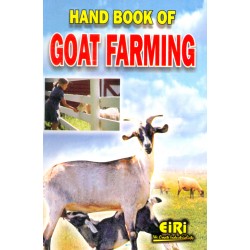

-250x250h.jpg)
